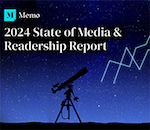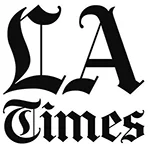Some years ago, when I called a friend at a news agency he always answered with the same Groundhog Day-like reply. "Can't talk now. This is the AP. We have a deadline every minute."
Now there's a media deadline every second. And that makes for sloppy and often inaccurate or biased journalism, especially when covering "fast breaking" news, like the Gaza war coverage.
I've always preached to people I worked with that sending inaccurate press material to journalists is a definite "no, no."
But many public relations people, including myself, have been accused of disseminating false information on behalf of clients to the media. While some in our business might have done so, I never did and hope that the same is true of all pubic relations practitioners. That's because purposely issuing inaccurate information can often have the following consequences: those being fed wrong information will no longer trust the public relations person and the entire agency might be put on the media "watch list."
Also, once the media determine that they have been lied to the client will also be put on the "suspect" list. Being lied to might also unleash investigative reporters into searching for the truth.
But distrust of information from PR people by many journalists continues. As big event breaking news coverage has proved – the latest regarding reporting of the Gaza conflict – it is the PR people and the millions of viewers of TV news that should be distrustful of what is reported.
That's because when a journalist on TV makes a mistake its usually accepted as truth by people who trust what is reported by their favorite small screen networks. Mistakes are usually ignored or buried by the news organization, or an excuse for the error accompanies the correction. Newspapers are much more forthcoming in correcting their mistakes.
PR people, who have a long history of studying news coverage, know that journalism has always had inaccurate reporting. Some erroneous reports were eventually retracted and corrected.
But what I call "oops journalism," mostly orchestrated by the cable TV networks, has again reached a new low (as it does so often) with its reporting about the Gaza war, where footage of devastated areas of Gaza are repeatedly shown, led by CNN, with commentary about the reason for the shelling turned upside down by continuous interviews with Palestinian and UN spokesmen that always put the blame on Israel, with very rare perspective provided by interviewers that Hamas' charter says its aim is to see that Israel no longer exists.
The reasons for inaccurate reporting are three-fold. Many of the reporter's so-called reliable sources often provide inaccurate and biased information; reporter's prejudices consciously or subconsciously are evident in their description of events; also the ridiculous race to be the first to report details of a story seems to be in be the DNA of TV producers and reporters, accuracy be dammed.
And, of course, images of wounded, dead and demolished areas in Gaza makes for good TV journalism.
At one time, the Associated Press and the United Press strived to be the first to report on a story. It might have made a little sense in those days because the wire services were eager to show that they were on top of things and UP was in a constant battle to prove that they can compete with the AP.
Now, with 60 seconds a minute reporting, it makes no sense. But that doesn't stop the black hole of journalism, the cable TV news shows, from being the first to be wrong when rushing to report on a story. Their excuses range from "the fog of war" to "we have to rely on our reliable sources." Verifying before reporting seems to be forbidden.
The broadcast networks might have learned a lesson when they prematurely announced a Gore victory against Bush in 2000. But not the cable networks, seemingly incapable of learning from past erroneous reporting.
Cable news reporting is at its best when it is following an on-going major breaking news story and brings in outside experts to analyze the events. It is at its worse when it uses its stable of regular reporters and pundits as analysts as if they were the oracles of every topic imaginable and continuously permits propagandists to spin facts without being challenged by interviewers who refrain from correcting untruths. (For fear of losing guests?)
Despite 24/7 cable news coverage, viewers come away with what amounts to either extended sound bites or echo reporting of the same comments, as if they were listening to a loop recording.
The result is a synopsis or an abridged version of a happening and too often inaccurate or biased reporting.
To get all the facts it is still necessary to read "old" journalism newspapers like the New York Times, Wall Street Journal, USA TODAY and the other too few remaining of America's great newspapers.
But a caveat: readers should be aware that how the lede is written, the use of quotes and especially the placement of photos and news stories in print publications, the Times in particular, can often reflect the biases of reporters and editors.
Arthur Solomon was a senior VP/senior counselor at Burson-Marsteller and now contributes to PR and sports business publications and consults on PR projects. He can be reached at [email protected].


 Trump Media & Technology Group today reported a $58.2M net loss on $4.1M in 2023 revenues, a disclosure that drove its stock price down 22.6 percent to $47.96.
Trump Media & Technology Group today reported a $58.2M net loss on $4.1M in 2023 revenues, a disclosure that drove its stock price down 22.6 percent to $47.96. Barry Pollack, an attorney at Wall Street’s Harris St. Laurent & Wechsler, has registered Julian Assange as a client with the Justice Dept. “out of an abundance of caution.”
Barry Pollack, an attorney at Wall Street’s Harris St. Laurent & Wechsler, has registered Julian Assange as a client with the Justice Dept. “out of an abundance of caution.” Paramount Global to slash 800 jobs in what chief executive Bob Bakish calls part of an effort to “return the company to earnings growth"... Rolling Stone editor-in-chief Noah Shachtman is exiting at the end of the month due to disagreements with chief executive Gus Wenner over the direction the magazine is taking... The New York Times broke the $1 billion barrier in annual revenue from digital subscriptions in 2023... Press Forward is investing more than $500 million to strengthen local newsrooms.
Paramount Global to slash 800 jobs in what chief executive Bob Bakish calls part of an effort to “return the company to earnings growth"... Rolling Stone editor-in-chief Noah Shachtman is exiting at the end of the month due to disagreements with chief executive Gus Wenner over the direction the magazine is taking... The New York Times broke the $1 billion barrier in annual revenue from digital subscriptions in 2023... Press Forward is investing more than $500 million to strengthen local newsrooms. The majority of news articles are read within the first three days of publication, according to a recent report.
The majority of news articles are read within the first three days of publication, according to a recent report. The Los Angeles Times gives pink slips to 115 people or 20 percent of its newsroom staff... TIME is also laying off about 30 employees, which is approximately 15 percent of its editorial staff... The Baltimore Banner, which was launched by Stewart Bainum in 2022 after he failed to buy the Baltimore Sun, added 500 subscribers per day in the three days following Sinclair Broadcast Group's deal to purchase the Sun.
The Los Angeles Times gives pink slips to 115 people or 20 percent of its newsroom staff... TIME is also laying off about 30 employees, which is approximately 15 percent of its editorial staff... The Baltimore Banner, which was launched by Stewart Bainum in 2022 after he failed to buy the Baltimore Sun, added 500 subscribers per day in the three days following Sinclair Broadcast Group's deal to purchase the Sun.


 Have a comment? Send it to
Have a comment? Send it to 
No comments have been submitted for this story yet.